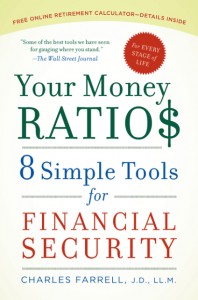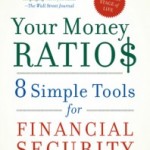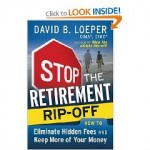Roth IRAs are tax-free. Traditional IRAs are simply tax-deferred. Surely tax-free is better, right? And surely, therefore, a Roth IRA is the best way to invest for retirement, right?
[Read more…] about In Defense of the Traditional IRA
Retirement
New Financial Tools Make It Easier to Plan for Retirement
 If you’re like most people, you find the process of retirement planning somewhat intimidating. There are lots of numbers, calculations and assumptions to make before you can decide how much you need for to save each year, how much you’ll ultimately need to retire, how big a mortgage you can handle and what type of insurance to buy.
If you’re like most people, you find the process of retirement planning somewhat intimidating. There are lots of numbers, calculations and assumptions to make before you can decide how much you need for to save each year, how much you’ll ultimately need to retire, how big a mortgage you can handle and what type of insurance to buy.
But there’s an easier way to plan that allows you to focus on some very clear and simple goals. Professional investors have for years been using financial ratios as shortcuts to evaluating the financial health of large companies. By looking at a few key ratios, investors can get a quick and comprehensive assessment of what sort of shape a company is in. The beauty of the ratios is that they compress mountains of data into one simple number that conveys a great deal of information.
[Read more…] about New Financial Tools Make It Easier to Plan for Retirement
Tax Tips For Parents
Having children is a wonderful experience that is priceless in so many ways! But do they cost you a lot! Fortunately there is some tax help for parents in the form of deductions and claims. Robert Meighan, vice president at Turbo Tax, has listed some great tax tips for parents:
[Read more…] about Tax Tips For Parents
Stop The Retirement Ripoff – Interview With David B Loeper
Have you wondered how good your retirement accounts are? Is your retirement money getting eaten up by fees you don’t see? With the way the stock market has been the last year many people have seen their retirement portfolio’s nosedive. Many people are no longer confident that their retirement savings will support them. How can you protect your retirement savings so you can live the life you want when your working years are over?
Enter author and financial adviser David B Loeper. Mr Loeper has a new book out – Stop the Retirement Rip-off: How to Avoid Hidden Fees and Keep More of Your Money (John Wiley & Sons, April 2009) – which aims to help workers get the most out of their retirement accounts and avoid costly fees.
Mr. Loeper, what prompted you to write your book, “Stop the Retirement Rip-off: How to Avoid Hidden Fees and Keep More of Your Money“? How bad are hidden fees in retirement accounts?
I noticed on my own personal 401k statement a column that said “Fees and Expenses” and the amount on the statement said zero. As a trustee of our plan having just gone through our annual negotiation with our vendor I knew the fees weren’t zero and this struck me as being more than misleading. I thought it was unethical. So I endeavored to calculate what I was personally paying. That “zero” expense was in reality over $1,500 I was personally paying, not to mention the thousands the company was spending on the plan as well. Despite being a trustee and having more than 20 years of retirement plan experience, it took me nearly 30 minutes to dig through everything and figure out what I was paying. I thought to myself, if it takes me this long with me being a trustee and knowing where to look, what are the chances any of my employees would be able to figure it out? I started researching it more and found a Government Accountability Office study that showed more than 80% of plan participants do not know what, if anything, they are paying. With the financial services industry lobbying hard to keep these costs hidden, and participant’s not knowing they are being ripped-off, I thought the only way to get this fixed is to educate participants, show them how to figure out if they are being skimmed and tell them how to coach their employer to fix it. That is exactly what the book does.
What’s the difference in a percentage point or two in expense fees
and why should we care?
The difference between a point or two is expenses is MASSIVE. An excess fee of 1.5% would cost a twenty five year old couple that each saves $2,500 a year with a $1,000 match OVER $1 million (or about ONE THIRD of their wealth) at age 65. (see The OTHER Millionaire You Make ).
How do I know if a plan I’m invested in has hidden fees?
Reading the book and following the step by step instructions is really the only way you will know. That is the problem. The fees are hidden and it is legal to do so. In many cases your employer doesn’t even know. You won’t know if you have hidden fees without doing a little homework. Is it worth a few hours of your time to find out? I estimate over 90% of all retirement plans have excessive fees that cost you your lifestyle in retirement. Your statements may provide SOME information and starting with expense ratios of your funds can give you a clue, but there are all kinds of schemes to hide expenses from you. A good place to start is look if you have a large cap index fund. The going rate for a fair expense ratio for a large cap index fund should be no more than 0.10% annually. If you are paying more (it is common to have such funds priced 3-5 times what is otherwise available) you are being ripped off. We are not talking about the difference between a Lexus and a Camry. We are talking about paying Lexus prices for a Camry!
Where can we put our retirement money to avoid costs and build up
enough to retire at the same time?
Anyone that answers this specifically without knowing the circumstances of the person is selling something. In general, low cost index funds are what we use to construct portfolios to serve each of our employee’s and client’s personal needs. They completely avoid the risk of materially underperforming and avoid needless expenses with certainty in exchange for having no risk of out performing. The value of avoiding underperforming is worth that trade off.
Realistically, what does it take for the average person to retire?
A well thought out plan that identifies ideal and acceptable goals with balanced confidence that avoids too much uncertainty and needless lifestyle sacrifice. We call this Wealthcare.
How are 401(k) plans as a retirement vehicle and what do we have to
look out for?
It depends on the plan. They can be great, and they can be terrible. Looking out for more than expenses is important too. Active management gambles, auto pilot target date funds, insurance company products and fund wrappers, conflicted advice are all HUGE warning signs that you might be better off investing outside of your 401k (or 403b, 457 plan).
That’s a lot to digest, but it seems like it’s essential that we have to look into our retirement plans ourselves and make sure we are getting what we pay for!
Thank you for your time and insight Mr. Loeper!
You can purchase your copy of Stop the Retirement Rip-off: How to Avoid Hidden Fees and Keep More of Your Money on Amazon.
A popular speaker and writer, DAVID B. LOEPER is the CEO and founder of Financeware, Inc. doing business as Wealthcare Capital Management in Richmond, VA. He is author of the top selling book Stop the 401(k) Rip-off!, three other books being released in 2009 by John Wiley & Sons (Stop the Retirement Rip-off, Stop the Investing Rip-off and The Four Pillars of Retirement Plans). He served on the Investment Advisory Committee of the $30 billion Virginia Retirement System and was chairman of the Advisory Council for the Investment Management Consultants Association (IMCA). He earned the CIMA® designation (Certified Investment Management Analyst) from Wharton Business School in 1990 in conjunction with IMCA.
I Re-Allocated And Re-Balanced My 401(k) Portfolio
I logged into my 401(k) plan. Ouch! It’s been taking a beating all year. In fact I mentioned that my 401(k) was hurting back in December when Hank over at MiB Smarter Money gave me a nice analysis of my portfolio. Now, I understand that I’m in this for the long haul as far as the investments are concerned. After all this is for my retirement which is still a ways off. There’s plenty of time for the investments to recover and do well. I’m not going to pull my money out because the market isn’t great. The only reason my contributions were lowered is because we’re a one-income family right now (I only lowered my contributions down to the company match).
So I accept that my 401(k) isn’t so hot. Now what? Well, I’ve been reading The Bogleheads’ Guide to Investing (which I won from The Digerati Life). I’m not done with the book (which, by the way, is a great how-to investing read) but I have read how important it is to have a good asset allocation and to re-balance your portfolio from time to time.
This made me wonder what my portfolio looked like. I set up how I wanted my assets allocated when I started contributing and I’ve made a few adjustments from time to time. But reading the Boglehead book made me re-think what my allocations should be. Also, I haven’t re-balanced the portfolio in the longest time. I’ve changed my future contributions but rarely what was already in there.
So today I changed that. Looking at my portfolio I realized I had funds that I was no longer contributing to but still had large balances. I also saw that based on suggested portfolios in the book and my age that I should probably have a higher percentage of bonds in my investments. Other funds that I was contributing a higher % to really took up a very small % in my portfolio since I haven’t been re-balancing.
First, I changed where my future contributions will be going. This is money that comes out of my check as well as the company match. Next, I moved investments already in my portfolio to match my new asset allocation. Both processes were pretty easy on the Fidelity site (the company that manages the 401k). Remember, changing your future contributions isn’t the same as re-balancing your portfolio. You have to look at both if you want it truly balanced to the investments of your choice.
Here’s what the allocation is now:
Stocks
Large Cap
- Fidelity Contrafund 18%
- Vanguard Institutional Index Fund Institutional Shares 22%
Mid Cap
- Artisan Mid Cap Inv CL 10%
Small Cap
-
Fidelity Small Cap Stock Fund 10%
International
-
American Funds New Perspective Fund Class R5 5%
-
Fidelity Diversified International Fund 5%
Bond/Managed Income
-
PIMCO Total Return Inst CL 30%
Before I started changing anything I made sure that there would be no fees for changing investments. Some funds charge a fee if you sell them before a certain time frame.
I also set up my account to send me an email if any of my percentages exceed 5% of what I set. This gives me a reminder to check if I want to re-balance the funds that changed.
I’m not expecting my portfolio to all of a sudden jump into the black but it will be interesting to look and see where it’s at year-end. Again, these funds are for the long haul as I won’t use them until I retire. That said, I still need to adjust my contributions and allocations as time goes on.
Sign up with ING Direct and get a $25 bonus – Free From Broke
![]() photo credit: James Jordan
photo credit: James Jordan



